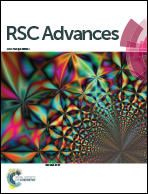Production of exopolysaccharide by Bifidobacterium longum isolated from elderly and infant feces and analysis of priming glycosyltransferase genes
Abstract
The exopolysaccharide (EPS) production of several Bifidobacterium longum strains isolated from infant and elder feces was determined. The relationship between EPS production and tolerance to artificial gastric and intestinal juices was analyzed. Moreover, priming glycosyltransferase (pGT) gene fragments of these strains were amplified and sequenced. The results indicate that their tolerance correlated well with EPS production, especially the production of cell-surface-bound exopolysaccharide (EPS-b). The EPS-b production by strains isolated from elderly volunteers was found to be significantly higher than that produced by strains isolated from infants. Lastly, the phylogenetic tree of the pGT gene sequence fragments showed that the pGT genes of infant-originated B. longum strains had greater homology than those of elder-originated strains.



 Please wait while we load your content...
Please wait while we load your content...